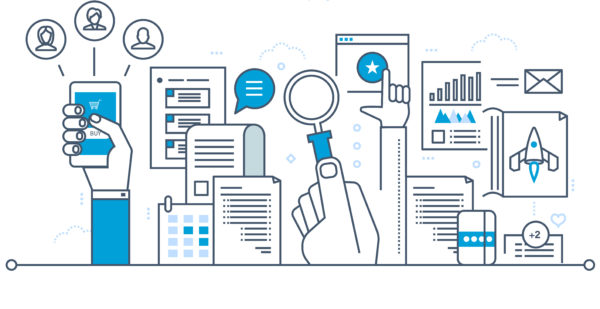Fake information is everywhere online. After all, everyone has a Facebook friend who elicits eye rolls when he or she shares a sensational news article that is fake or from a heavily-biased site promoting an agenda. But can today’s students tell the difference between what is legitimate and what is false? The answer might surprise you.
As today’s students grow up in a digital world, they must learn information literacy skills if they are to effectively evaluate information sources and become truly informed. Skills such as problem solving and creativity are typically classified as soft skills, because they are necessary but hard to measure. In today’s online world, however, information literacy is moving from a soft skill to one of the most critical.
Why is it critical? Consider this: during the 2016 presidential election, fake news stories were more popular than legitimate media reports.
A BuzzFeed analysis found that in the last three months of the U.S. presidential campaign, the most-viewed fake election news stories on Facebook elicited more reader engagement than legitimate top stories from sources such as the Washington Post, the New York Times, and NBC News. In all, top-performing fake news stories received roughly 1.3 million more shares, reactions and comments than did the legitimate top-performing news stories.
Facebook was heavily criticized for what many deemed an inadequate attempt to remove fake news stories and false information from the site. Later, CEO Mark Zuckerberg said that while the Facebook team does not want to discourage members from using the platform to share opinions, it is taking steps to prevent and penalize the spread of misinformation.
“Anyone on Facebook can report any link as false, and we use signals from those reports along with a number of others–like people sharing links to myth-busting sites such as Snopes–to understand which stories we can confidently classify as misinformation,” Zuckerberg wrote. “Similar to clickbait, spam and scams, we penalize this content in News Feed so it’s much less likely to spread.”
(Next page: 7 information literacy resources; a Stanford U. study)
A Stanford University study drives the point home even further–it determined that students from middle school through college were not able to distinguish between reliable news sources and sponsored content or advertising.
“In every case and at every level, we were taken aback by students’ lack of preparation,” the study’s authors wrote. “Never have we had so much information at our fingertips. Whether this bounty will make us smarter and better informed or more ignorant and narrow-minded will depend on our awareness of this problem and our educational response to it.”
In the midst of fake information and biased websites, though, organizations are working to give students the skills they need to separate factual information from false news:
1. P21 includes information literacy in its Framework for 21st Century Learning to help students not just access and evaluate information in a critical and competent manner, but also use that information accurately.
2. The Center for Media Literacy offers resources and documents that educators can use to form definitions of media literacy and demonstrate its importance for students.
3. The American Association of School Librarians notes that the definition of information literacy has changed as technologies and resources have evolved, but critical thinking and evaluation skills will help students succeed in a tech-based global economy.
4. This list of resources from the National Council of Teachers of English includes a couple resources about evaluating sources for potential arguments, bias or propaganda.
5. Frank Baker’s Media Literacy Clearinghouse was recently updated to include a special section on fake news and helping students navigate it.
6. Media Literacy Now offers a wealth of information and tools to help educators and students tackle the issue of fake news and information evaluation.
7. The News Literacy Project’s mission is to help young people learn how to identify credible news sources and apply that knowledge as they continue learning.
- Friday 5: Virtual field trips - April 26, 2024
- Google, MIT RAISE launch no-cost AI training course for teachers - April 26, 2024
- 4 ways to support work-based learning - April 23, 2024

